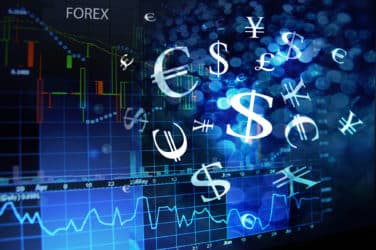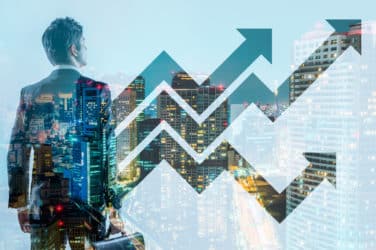Currency traders and investors are about to get, if not get more of, the electronic/low-touch methods of trading.
Long the bastion of telephony, manual executions and trading occurring between and handled by handful of banks, the foreign exchange market is becoming “equitized”.
And what does that mean, exactly?
It means the electronic trading revolution that has occurred in the equity universe – use of algorithms, multiple venues, IOIs, dark pools and other technologies that have made trading stocks incredibly efficient for investors, more profitable for trading house, allowed new technology vendors to offer better products at every increasing cheaper prices and open up the markets to more investors is happening. In what could turn out to a very similar, yet unique trajectory that the equity markets followed after decimalization and Regulation NMS, the $5.3 trillion forex mart is ripe for innovation.
For example, in the last year alone technology vendors such as Pragma, FastMatch, Portware, FlexTrade, CLS, OANDA and RFX Networks have entered the space and are providing algorithms, data, co-location services, post trade analysis, TCA and network connectivity to the space. This technology shift, akin to what equities underwent, is already laying the groundwork for more efficient and broad sweeping trading. The concept of and achievement of best execution, a long-standing focus in equities, is now being looked at in the fx world.
Add to this the adoption by many ( and still many more to come) is the Global FX Code. Think of the Code as foreign exchange’s own version of Reg NMS. According to Russell Investments’ Ian Battye, the FX Global Code is an important document.
“It’s simply a set of principles of good practice in the foreign exchange marketplace,” Battye said. “It was developed to provide a common set of guidelines that promote the integrity and effective functioning of the wholesale foreign exchange market. The Code was developed through a partnership of central banks and market participants from around the globe.”
The purpose of the Global Code is to promote a robust, open, and appropriately transparent market. With that purpose in mind, According to Battye, it is self-evident that Russell Investments would be one of the first asset managers globally to sign. “And it seems equally evident that those who haven’t yet signed the Code should be questioned.”
The Code advocates a diverse set of market participants, supported by resilient infrastructure, who are able to confidently and effectively transact at competitive prices that reflect available market information. Their transactions should occur in a manner that conforms to acceptable standards of behavior. The Code addresses a broad set of issues relevant to foreign exchange market participants such as ethics, governance, execution, information sharing, risk, compliance, confirmation and settlement.
Market consultancy Greenwich Associates also sees the treend to a more equitized universe in forex, noting in a recent report the advent and use of switching from traditional OTC FX trading to FX futures. The report, “A Bright Future for FX Futures”, concludes that, in many scenarios, futures are a cheaper alternative to OTC trades in the FX market, with savings reaching upwards of 75% in some cases.
“Given the increased scrutiny that buy-side traders are placing on trading costs, along with regulatory schemes such as Basel III, which will likely drive execution costs higher, FX futures are a product that traders need to consider,” said David Stryker, Principal with Greenwich Associates Markets team, and author of the report.
Pure costs savings are not the only reason to consider FX futures. As sell-side dealers become more selective in the clients that they prioritize, some buy-side traders may find liquidity more difficult to access than it has been in the past.. For others, they may find that they are getting de-prioritized and receiving fewer services from particular counterparties altogether. As a result, adding the option to trade in a futures environment could help mitigate the effects of shifting sell-side behavior.
The consultancy added it expects liquidity in the futures markets to continue to grow, making it progressively easier to trade FX on an exchange. Meanwhile, given the pressure that the sell side is facing to meet capital and return requirements, Greenwich Associates expects the implicit cost of trading OTC FX to rise in the coming years.
“Over the short and medium term, FX futures will continue to gain traction,” Stryker added. “Our analysis proves that even before considering the potentially punitive effect that regulations have on trading costs, trading FX futures makes clear economic sense.”
And what about algorithms?
Dmitri Galinov, Chief Executive Officer at FastMatch in New York, reported that more and more of his firm’s clients are using algorithms to trade forex. And Galinov, who formerly ran Credit Suisse’s AES Liquidity Strategy and Crossfinder Dark Pool, is keen to point out the benefits of algorithmic trading which he has seen firsthand.
“I think many people in forex are beginning to see that breaking out an order into smaller pieces via algo is a better choice than what they’ve been doing up until now,” Galinov said. “However, it is safe to say that FX algos are in their infancy when compared to equities.”
Part of the problem as Galinov sees it is the fact there is a lack of data availability in foreign exchange trading as compared to equities. He pointed out that since the forex market regarded as over-the-counter (OTC) market and does not transact on a centralized exchange. Thus, there is little uniform data available. By his measure, the FX ECNs only publish approximately 15% of their data while the rest of the market trades ‘in the dark.”
“I’d say that only 6% of the market is covered by good quality data,” Galinov said. “Algos need to have data – such as volume traded per unit of time – in order to properly slice a large order into smaller pieces.”
To that end, Galinov and FastMatch has launched their own product dubbed FX Tape last November that records and makes available to customers and algorithmic developers FX trade data. With this data now in the public domain, everyone benefits, he said. FX Tape, he hoped, will also serve as a central reference point for spot FX transacted prices, helping individuals and companies to benchmark their FX rates. FastMatch is now making this data available for a small monthly fee. The FX Tape is open to all contributors under an open access model with a percentage of the net revenue generated by FX Tape shared with contributors, according to the volume contributed.
And what about TCA?
Thomson Reuters’ Neill Penney, head of Thomson Reuters FX Trading Business and Co-Head of Trading agreed with Galinov. In a recent conversation with Traders Magazine he said that algo use is growing in his asset class and that includes the use of trade-cost analysis (TCA) to find ways to improve algo and trader performance. Penney said that along with algo use comes the need for TCA. Customers, he said, need to have tools to analyze what happened with their trades and to enable subsequent trades to be done more effectively.
“What you’ll find is the transaction cost analysis and algos goes hand in hand,” Penney added. “One is the execution and the other provides the intelligence around the execution, which both audits that the trade when done in accordance with the right strategy, and potentially provides feedback that the customer can use to refine the strategy for the next time.”
This article originally appeared in the May 2013 edition of Traders Magazine
Forex Trading Getting ‘Equitized’
By Gregg Wirth
Foreign exchange and equities are two distinct asset classes, each with their own set of trading procedures, customer demands and levels of execution.
But that is not stopping trading desks at the nation’s largest asset management firms from nudging the two closer together. Often at the behest of clients, asset managers are coming to the realization that trading in these seemingly disparate types of financial instruments needs to be at least synchronized, if not also overseen by the same trading desk.
“It’s really a radical transformation of FX as an asset class,” said Will Geyer, head of order and execution management systems at ITG, an agency-only broker. “It’s a natural trend and points to the sophistication of the FX process and the desire to bring the thought leadership in equities to the growing FX operations.”
The reasoning behind this push, several trading firm executives told Traders, is to better harmonize equities and FX trading. Working the two in concert offers the best of equities trading-transparency, low-cost and rapid-fire electronic execution-in the firm’s currency trading operations.
In effect, asset managers are starting to “equitize” the FX side of the trading ledger. This means creating an FX trading operation that comes to mimic equities trading with competing electronic trading platforms that offer low transaction costs, high speed and greater transparency.
In practice, algorithms designed for currency trades can scan for the best price and execute instantaneously in quantities determined by a trade schedule. The algorithms bring the promise of lower costs and efficiency to the end user, Geyer noted.
This is already true in FX trades done in tandem with equity side transactions that involve foreign securities, according to Mark Kuzminskas, director of trading at Robeco Investment Management. For example, if you have a customer trading in Japanese securities, chances are they’re going to be sitting with a serious position in yen, to back up that trading. Those buyside firms want to manage that exposure on the FX side, and lock in profits on a trade at the best possible exchange rate. “Lots of investors are playing with the FX part of the trade that way,” he said.
The move is also an overt attempt, the executives added, to bring the best practices of equity trading-such as algorithmic trading, superior order flow and execution via ECNs, as well as a focus on transaction-cost analysis-to the FX side of the business.
In the most concrete examples, some of the largest investment managers have made their heads of regional equity desks take on the additional role of heading the firms’ FX desks. Vanguard Group, the largest mutual fund firm, has had its equities trading desk chief handling FX desk duties for the past few years, said Vanguard spokesman David Hoffman.
“We agree FX is starting to develop like the equity market,” Hoffman said. Vanguard, for instance, has made it a priority to use transaction-cost analysis to guide clients’ trading and routing strategies, with the goal of matching a client’s objectives with a particular trading style. “That said, on which desk the trading is actually done is not that important.”
The movement toward better equity-like execution on the FX side makes a lot of sense, said James J. Angel, a visiting capital markets professor at the University of Pennsylvania’s Wharton School. “The rest of the securities universe is going to get equitized,” Angel said. “All the innovations that we’ve seen in the equities market are going to spill over to the rest of the asset world, both domestically and internationally.”
Algorithmic Growth
Algorithmic trading, which currently represents just about 5 percent of FX trading, is one area where an equities-style execution could greatly improve the FX trading paradigm, Geyer maintains.
Given the low level of algorithmic trading on the FX side, there is enormous room for growth if FX traders strive to emulate their equity counterparts, where more than 50 percent of equities trading is now done through algorithms, according to data from industry research firm Tabb Group.
“The trend could optimize the life cycle of execution by using the guidance of the equity side,” Geyer noted, adding that this “life cycle” includes the process in which the trade data is captured, analyzed and implemented as a set of trade strategies. The cycle is repeated to tweak and optimize the end results.
Increased use of electronic platforms is a natural fit for FX, said Robeco’s Kuzminskas. “It makes tremendous sense from the point of centralizing the whole trade relationship,” he told Traders Magazine.
Indeed, while executives such as Geyer and Kuzminskas theorize that this push is being led by customers seeking more equity- and FX-linked trading strategies, there is another factor involved: regulatory change that is encouraging more transparent and modernized trading platforms.
This changing landscape in terms of the growing modernization and multiplatform electronic trading is being quickly ushered in by new regulations, such as Regulation NMS. The National Market System rules established in 2007 by the Securities and Exchange Commission were intended to “modernize and strengthen” the nation’s equity markets, Angel said.
“It’s a Reg NMS world now,” he said. But a full embrace of algorithmically driven execution of trades in non-equities asset classes such as foreign exchange will not happen overnight, mostly because of regulations governing differing asset classes.
“But because FX is so easy to monitor, every buyside investor who is not doing [transaction-cost analysis] on its FX strategy runs the risk of being found negligent,” Angel said. “There is an FX component on almost every trade, and asset management firms have to be careful that they are treating that with the same care as they are the equity trade itself.”
Special FX
Many of the largest asset management firms, such as Fidelity Investments, BlackRock, Vanguard Group, State Street Global Advisors, JP Morgan Asset Management and others, acknowledge that in certain circumstances, customers’ FX trades need to be handled in tandem with their equities trades and that those trades have taken on increased importance.
Many of the firms have taken steps within the past year or so to better synchronize trading in the two asset classes, even moving some personnel around to give FX the benefit of increased equity trading oversight.
Fidelity Investments also has recognized the synergies between the electronic markets in equities and FX, according to spokeswoman Sophie Launay, and has moved to structure the two trading operations similarly.
Obstacles to the increasing linking and automation of trading equities and FX exist. These mostly come from the largest global banks, such as Deutsche Bank, J.P. Morgan or Barclays, which would see their strongly entrenched positions as foreign-exchange trading titans displaced under a dispersed and fully automated FX trading environment.
The situation is similar to that of the New York Stock Exchange market makers in the 1990s, who didn’t want to give up their turf either and were in no hurry to be displaced by electronic exchanges such as the Nasdaq Stock Market, said Angel.
There, those electronic participants-such as Knight Capital Group-who were able to understand the changing market and embrace the new technology were able to adapt and flourish. “Frankly, FX pricing is an easy thing to do and an easy thing to monitor,” Angel explained. “And large investors are realizing that the banks may not be giving them the best pricing.”
Indeed, State Street and BNY Mellon are currently defending their FX trading fees in court against accusations from several state pension funds that the banks promised low-cost FX trading, and then inflated their profits with hidden markups. Both banks have said the pension funds’ claims are without merit.
State Street’s own exchange-traded fund and investment management operation, State Street Global Advisors, agrees that entrenched interests may slow full synchronization of equities and FX, unless such melding of trading operations is mandated by regulators, like the SEC.
“However, I think the SEC has other things on its plate right now,” State Street spokeswoman Alicia Curran said. “But I think most traders would like to see it happen.”
At State Street, there are three regional heads of equities, in the U.S., Asia-Pacific and Europe. Each head oversees all asset class trading, including FX, and all act under the firm’s global head of trading, Chris Rice.
While State Street Global Advisors, trading is still a smaller operation (fewer than 100 traders), it is moving toward common platforms, something Curran said is an industry goal.
Separately, State Street eExchange, which is part of State Street Global Markets, a brokerage division, also created two electronic FX trading platforms, FXConnect, for limited institutional use, and Currenex for retail use, Curran said.
“Everybody would like to see FX get more electronic execution, but sometimes, you just have to pick up the phone and call J.P. Morgan because the electronic volume is not there,” Curran said.





